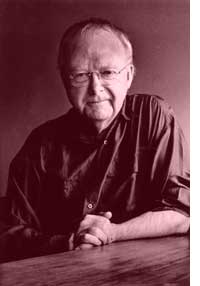Louis Andriessen interview on his new 'infernal tale'

Louis Andriessen discusses Racconto dall’Inferno, his new work for voice and ensemble
When did you first encounter Dante’s Divine Comedy?
It was about 25 years ago, so Dante has been a companion for a large part of my composing life. I was writing De Tijd when I read a reprint of a remarkable translated version of Commedia by an old Italophile Dutch monk dating from the 1930s. I found a phrase in the Paradiso section that describes "gazing on the point beyond which all times are present" and this was perfect as a motto for De Tijd. Since that time I’ve repeatedly dipped into the book to read fragments
What appeals to you as a composer in the Inferno section?
Well there are many allusions to music with descriptions of singing and playing instruments. The music can be both vulgar as when the demon Barbariccia trumpets with his behind, or sublime with visions of celestial choirs. But to be honest it is not the music that draws me to the work. I see it as one of the highest points ever reached in literature and philosophy. It combines complexity, intellectualism, horror, beauty, multi-layering, allusions, historical and mythological references, and, above all, irony.
How do you view Dante’s balancing between religious and secular?
If you return to the origins of the work in the early 14th century its title was simply Commedia. It was only later in the mid-16th century that an edition included the word ‘Divine’ in the title. So for me it is more important as a proto-humanist text than as a religious one. There is much about the physicality of love and about the world of science. It is also a great political manifesto, which had an enormous impact in its time because it was so widely-read, including by those who were its satirical targets.
Does the spatial geography in Dante’s vision of hell affect the work’s musical structure?
The Commedia as a whole is meticulously organised and there are number structures working throughout the text. Most obviously the number three plays a big part from the surface level of the three main divisions into Inferno, Purgatorio and Paradiso, down to a very detailed level. However, I’m not a composer who is obsessed with numerology, and it doesn’t play a big part in Racconto dall’Inferno, though it might in a larger-scale 90-minute film-opera I’m planning based on all three sections of Commedia.
How Italian a work is it?
I wouldn’t say there is much in the music that is Italian. But the text is Italian and it is a language which I can speak fairly well and have been interested in since my student days in the 1960s at the Hague Conservatoire and with Berio in Milan. It has become more important again in recent years because I have been working with the singer Cristina Zavalloni who is a dream interpreter of my music. I have wanted to create works which she can sing in her native language including the poetry of Campana in La Passione and Dante in the new score.
What is your approach to the narrative demands of the text?
For many modernists the use of non-musical aspects is taboo, but I don’t agree with this, because I believe total abstraction leads to the death of music, which likes to be surrounded by other worlds such as those of theatre, love, or God. That said, I’m not drawn to using existing material with all its emotional connections as in the works of Mahler because, if I tried to do the same thing, it would become second hand. You cannot force a connection between music and a specific feeling or dramatic situation. I’d rather use a text that is suggestive in the sense of putting forward many possible interpretations. And this is matched for me by the performance style of Cristina Zavalloni.
How would you characterise the ensemble that accompanies the voice?
If the soundworld of La Passione is more 19th century, that of Racconto dall’Inferno is possibly something earlier. The body of strings comprises three violins and three cellos, then there are two pianos providing a bridge to the plucked world of the cimbalom, guitar and bass guitar. The two works perhaps share a nervous energy in the instrumental lines, but here the infernal region calls for lower pitched material.
Are you drawn more to the demonic elements or the comedic?
I hope they are in balance as what appeals to me most about the Dante is its critical analysis of the whole world in which we live. Yes, there are grotesque elements in Canto XXI pointing towards Hieronymus Bosch, but my new work is not in a danse macabre-style as was dancing on the bones. It is a much hotter piece, and not scherzo-like in character - I’ve tried to capture the amusing and very human aspects of the text. Perhaps the best description is closer to something by Fellini, part-nightmare and part-dream.
Interviewed by David Allenby
Louis Andriessen: Racconto dall’Inferno (2004)
for voice and ensemble
Co-commissioned by MusikFabrik and RAI
24 October 2004 Cologne (world premiere)
Cristina Zavalloni / MusikFabrik / Reinbert de Leeuw
3 February 2005 Turin
Cristina Zavalloni / Orchestra Sinfonica Nazionale RAI / Zsolt Nagy
1 June 2005 Amsterdam
Cristina Zavalloni / Asko Ensemble / Reinbert de Leeuw
> Further information on Work: Racconto dall' inferno
Photo: Louis Andriessen © Francesca Patella
